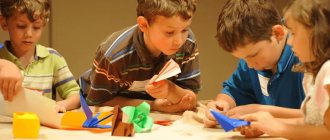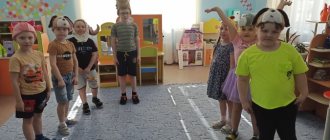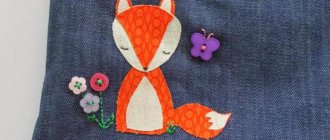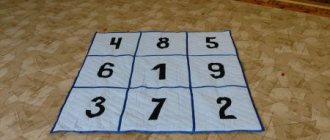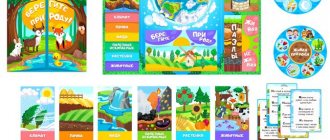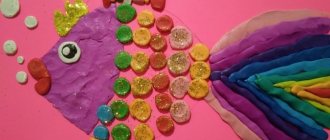Origami for children is the legendary art of folding paper figures for the all-round development of your baby. A variety of origami patterns for children of different ages.
Origami snowflakes Origami Christmas tree Pig Origami crane Bear Bee Monkey duck Chick Paper house Origami sheep Origami cat Origami fox Origami mouse Origami dog Origami frog Origami tulip Wind blower Origami airplane Origami star Pumpkin Origami heart
The art of paper folding originated in ancient China. This did not happen by chance, since it was here that paper was first made. For a long time, origami was available exclusively to the upper classes, who studied it along with receiving a musical education and the art of adding haiku.
However, despite its homeland, paper origami for children became known thanks to Japan, China’s neighbor and main competitor, both in production and in cultural life. Local samurai made figurines from ribbons to give to each other before battle. And at the wedding, paper butterflies accompanied the bride and groom, symbolizing their pure and light souls.
After Japan opened its borders to the rest of the world, origami for children in the form of patterns quickly spread throughout the world. The German teacher Friedrich Froebel made a significant contribution to the development of art. He came up with the idea of using folding as an activity that helps develop fine motor skills and spatial imagination in children. Since the end of the 19th century, this technique has been successfully used in kindergartens around the world.
Origami materials
The classic, familiar material for folding is paper. However, any sheet is suitable for origami, for example, foil, parchment, starched fabric. Special paper can be bought at the store; it is square in shape, with one white side and one colored side. It feels thinner than the one we buy for the printer, making it easier to fold several times.
But in Japan, classic figures are folded from washi paper. This is a handmade material, dense, heterogeneous, compared to ordinary sheets.
Plan of work for the circle for the year on "Origami" in kindergarten in the preparatory group
Circle work in the preparatory group “Rainbow” “Origami”
Explanatory note. Preschool age
is a bright, unique page in the life of every child.
It is during this period that the child’s connection with the leading spheres of existence is established: the world of people, nature, the objective world. There is an introduction to culture, to universal human values. Curiosity develops and interest in creativity is formed. Origami classes allow a child to satisfy his cognitive interests, expand awareness in this educational field, enrich communication skills and acquire the ability to carry out joint activities in the process of mastering the program. It also promotes the development of fine motor skills of the hands, which is of no small importance for the development of a child’s speech. This type of art has a beneficial effect on the development of attention and memory formation: children remember terms, techniques and folding methods, and, as needed, reproduce the knowledge and skills stored in memory. The goal of the program: to create conditions for the aesthetic development of children in the process of mastering the basic techniques of origami technique, as an artistic method of designing from paper. Objectives of the program: - To introduce children to the basic geometric concepts and basic shapes of origami. — Develop the ability to follow oral instructions. — Teach various techniques for working with paper. — Introduce children to basic geometric concepts: circle, square, triangle, angle, side, vertex, etc. — Enrich the child’s vocabulary with special terms. — Develop attention, memory, logical and spatial imagination. — Develop fine motor skills of the hands and eye. — Develop artistic taste, creativity and imagination of children. — Cultivate interest in origami creativity. — Form a work culture and improve work skills. — Contribute to the creation of play situations, improve children’s communication skills. — Improve labor skills, develop a work culture, teach accuracy, the ability to use materials carefully and economically, and keep the workplace in order. Methods used in the circle lesson: conversation, story, fairy tale, showing a sample of the work sequence. The methodology for working with children is based on the following principles: - Selection of content accessible to children 6-7 years old; — Gradual complication of program content, methods and techniques for managing children’s activities; — Individual approach to children. Expected results: As a result of training in this program, children:
- will learn various techniques with paper;
- will know the basic geometric concepts and basic shapes of origami; - learn to follow oral instructions and create origami products; - will develop attention, memory, thinking, spatial imagination, fine motor skills; Forms for summing up the implementation of the additional educational program: - Drawing up an album of the best works; — Holding exhibitions of children's works. The program is based on: 1. “Origami in kindergarten” Musienko S.I., Butylkina G.V. 2. “Theory and methodology of creative design in kindergarten” Paramonova L.A. 3. “Origami for older preschoolers” Sokolova S.V. 4. “Magic Paper” by N.N. Chernov. Work is carried out outside of class in the afternoon. Lesson duration is 25 minutes.
Calendar plan.
October. 1. Topic: “Flag”. Goal: To teach children to fold a square in half with a “kerchief”, combining opposite corners. Material: Two red squares 15/15 cm, two strips 1 cm wide, 20 cm long made of cardboard, glue. 2. Topic: “Glass”. Goal: To consolidate the ability to fold a square diagonally, to learn how to bend the sharp corners of the resulting triangle to opposite sides, and insert it into the resulting gap. Material: Square 10/10 cm any color. 3. Topic: “Book”. Goal: Learn to bend a rectangle in half, combining the short sides. Material: Three A4 size rectangles: two of them are white, the third is colored, glue. 4. Theme: “Christmas tree”. Goal: to teach children to fold a rectangle in half, combining opposite corners, bend the resulting triangle, learn to form a Christmas tree from triangles, starting from the bottom with the largest part. November 1. Topic: “Kite”. Goal: to increase children’s interest in making crafts using the origami technique, to consolidate the skills of decorating a finished figurine, and to practice free choice of colors. Material: 10/10 cm paper squares of any color, strips of multi-colored paper, glue. 2. Topic: "Frog". Purpose: To introduce the making of simple crafts using the origami technique by folding a square diagonally (the basic shape is a triangle). Material: Green square 10/10 cm, blanks for frog eyes, glue. 3. Topic: “Bunny”. Goal: Continue to teach children how to make crafts using the origami technique. Material: 10/10 cm square, blanks for eyes and muzzle, glue. 4. Theme: “Butterfly”. Goal: Learn to bend a square diagonally, fold the resulting triangle in half, bend the upper sharp corners in different directions. Materials: Paper squares 10/10 cm, blanks for eyes, glue. December 1. Topic: “Snowflakes.” Goal: To teach children to connect parts in pairs, tucking the corner of one inside the other part. Material: 12 blue squares 5/5 cm, a blue circle with a diameter of 3 cm and a white circle with a diameter of 2 cm, glue. 2. Topic: “Gnome”. Goal: Continue to teach children to make paper figures from two parts, teach clearly, and follow the teacher’s instructions. Material: Squares 8/8cm, 6/6cm, different colors, paper trim, glue. 3. Topic: “New Year’s decorations.” Goal: Continue to learn how to make simple crafts from paper squares, using already familiar paper folding techniques. Material: Multi-colored squares of different sizes, paper scraps, glue, threads. January 1. Topic: “Kolobok”. Goal: To teach children to bend all corners of the rectangle evenly, to continue to teach how to decorate a craft with details (mouth, nose, eyes). Material: Yellow rectangle 20/10cm, orange and red squares 3/3cm, two orange circles, glue. 2. Topic: “Bunny”. Goal: to consolidate the ability to bend a square with a “book” and twice with a “scarf”, lower the opposite corners to the center of the square, getting a “candy”. Material: Gray squares 8/8cm and 10/10cm, blanks for eyes and muzzle, glue. 3. Theme: "Wolf". Goal: Continue to learn how to bend a square with a “scarf”, bend one of the corners diagonally towards the top, strengthen the ability to glue a head, and draw eyes. Material: Two gray squares 15/15cm, 10/10cm, blanks for eyes and nose, glue. 4. Topic: "Fox". Purpose: To introduce in practice the basic geometric concepts. Material: Orange (red) square 15/15cm, rectangle 15/7.5cm, blanks for eyes and muzzle. February 1. Topic: “Bear”. Goal: To learn to bend the “kerchief” in half, to learn to understand that the parts of the head and body are made separately from squares of different sizes. Material: brown squares 15/15cm, 10/10cm, two squares 6/6cm, glue. 2. Topic: “Boat”. Goal: to introduce children to making crafts using the origami technique from a rectangular sheet of paper, to practice free choice of colors, and the use of ready-made figures in games. Material: Rectangular sheets 20/15cm. 3. Topic: “Stars”. Goal: To consolidate the ability to fold the basic “kite” shape, learn to alternate colors, fold parts by applying the short side of the workpiece to the inflection line of the previous one. Material: 8 squares 10/10cm, 4 of them one color, 4 of another, glue. 4. Topic: “Chicken”. Goal: Learn to fold a square twice with a scarf. Material: Red square 3/3cm, yellow (orange) square 15/15cm, glue, pencil or felt-tip pen. March 1. Topic: “Chrysanthemum”. Goal: To introduce children to a new way of making flowers using the origami technique, to strengthen the ability to use scissors. Material: 16/20 squares 4/4cm white or purple, yellow paper, scissors, glue. 2. Topic: “Gift for Mom.” Purpose: To introduce the design of postcards using figures made using the origami technique. Material: Multi-colored cardboard, squares of yellow, blue, red paper 10/10cm, green paper for leaves and stems, glue, scissors. 3. Topic: “Turntables.” Goal: Learn to make new crafts from a square, circle, triangle, learn to use the designations of the cut line on the workpiece. Materials: Squares 15/15cm, scalene triangles with a side of 20cm, circles with a diameter of 20cm with cut lines, cardboard circles, glue, scissors. 4. Topic: “Kitty”. Goal: To reinforce folding and the names of basic shapes with children, teach how to make a torso and head separately from squares, learn how to fold a triangle with a “kerchief”, raise the corners from the middle of the long side, but not reaching the top of the upper corner. Materials: Two 15/15cm squares of the same color, pencils or felt-tip pens for designing the face, glue. April 1. Topic: “Gifts for kids.” Goal: Using the origami technique, teach how to make models of birds and boats. Material: Multi-colored squares 10/10cm. 2. Topic: “Fish”. Goal: Learn to fold paper using different basic shapes, joining in pairs to create a marine composition. Materials: Blue cardboard, multi-colored squares, scissors, glue, paper scraps. 3. Topic: "Owl". Purpose: Remind how the basic shape of a kite is folded, teach how to bend the upper triangle forward and return to the starting position, make cuts along the fold line, and fold the ends. Material: Square 10/10cm, blanks for eyes, muzzles, glue. 4. Topic: “Hedgehog”. Goal: Continue to teach children to fold a square in half with a “book”, understand the terms “upper corner”, “lower corner”. Material: 10/10 cm gray or brown square, pencil or felt-tip pen to draw eyes and corners on the fur coat. May 1. Topic: “The rooks have arrived.” Goal: continue to teach children how to make crafts from the basic “kite” shape, and improve their skills in working with paper and scissors. Materials: Black squares 15/15cm, blanks for eyes, scissors, glue. 2. Topic: “Rowan branch.” Goal: to consolidate the ability to make crafts from the basic “arrow” shape. Material: Cardboard, 1.5/1.5cm squares of orange or red, 3/3cm green for leaves, glue, scissors. 3. Topic: “My favorite origami.” Goal: To consolidate the methods and forms of origami learned in classes, to improve the skills of fine and precise finger movements of both the right and left hands; cultivate interest in the results of your work. Materials: Multi-colored squares 10/10cm, scissors, glue. 4. Topic: “Final lesson.” Purpose: Registration of children's work during the period of study; development of communication skills and the ability to coordinate one’s interests with the interests of other children. Material: Album, origami crafts, glue.
We recommend watching:
Using modular origami in working with children Summer application for children using the origami technique. Strawberry Volumetric applique made of colored paper and napkins for older preschoolers Summary of a game-lesson in a preparatory group on origami
Similar articles:
Summary of parental education on the topic: Development of fine motor skills of the hands
Modular origami for beginners. Master Class
Volumetric application “Underwater world” using origami technique for children 5-6 years old
Variety of origami types
Experts distinguish several types of folding art:
- classic. For it, take one square sheet, and the figures are folded without scissors and glue;
- modular. Several sheets of different shapes and sizes are used, from which modules are assembled according to the origami scheme. Then the individual figures are connected using the nesting method;
- kusudama. A type of modular assembly, as a result of which a large figure in the form of a ball appears. You can put souvenirs or aromatic herbs inside it, using the ball as a sachet;
- Kirigami. This version of origami allows the use of scissors and glue.
Senior group. Senior preschool age. Children 5-6 years old
“How we made crafts in the origami style “Gnome” with children 5 years old
By following the teacher’s instructions, children improve their skills in making crafts, work in mini groups to achieve goals, and coordinate their actions with the actions of the children . The diagram helps to understand from which geometric shape and in what sequence...
Origami “Fox” for children from 5 years old
origami
technique . Tasks: - consolidate techniques for working with origami - folding along lines; - develop hand motor skills and imagination; — to cultivate independence, perseverance, accuracy, and interest in creativity. Hod: The animal world serves as an endless…
Paper folding for kids
Modern origami for children carries multiple features of classical art, since the simplest, initial models are taken as the basis. Kids happily do folding; for them it is real magic when a crane, boat or frog suddenly appears from a square sheet of paper. Paper origami for children is an excellent option for a quiet activity that develops fine motor skills and abstract thinking, because when making the next fold, the child must understand how it will look when finished.
Origami classes are suitable for both creative groups in kindergarten and for studying at home. Folding figures with parents is a fun, interesting activity that will appeal to all family members.
Go to the children's crafts section
Summary of GCD in the senior group. Topic: paper construction (origami) “Airplane”.
Summary of continuous educational activities in the senior group.
Subject:
designing an “Airplane” out of paper (origami).
Educator: Gavrilyuk Svetlana Vladimirovna
Program content:
To promote the accumulation in children of specific ideas about airplanes;
Refine and consolidate the ability to fold a sheet of paper in half, diagonally;
Teach children to work according to the model;
Strengthen children's knowledge about types of aircraft and their purpose;
Foster a sense of responsibility and collectivism.
Material and equipment:
illustrations of different types of aircraft; sheets of paper, aircraft manufacturing diagram, felt-tip pens.
I.part
Educator: Hello, guys. I am very glad to see you at the lesson for young modelers and designers. What we will construct today, you will find out by guessing the riddle: Who can tell me what kind of bird is rushing in the sky like the wind. White draws a trail behind him in the blue azure? And the pilot is driving it! - What is this? - … (Airplane)!
Educator: Guys, how can you figure out what the plane is for? (children's answers)
Educator: Guys, what types of aircraft do you know? (children's answers).
Educator: What are passenger planes for? (intended for transporting passengers and luggage).
Educator: What are cargo planes for? (intended for transporting various goods).
Educator: what is military aviation needed for? (designed to solve problems of a defensive and offensive nature).
Educator: Guys, how are airplanes used in agriculture? (application of mineral fertilizers, use of growth stimulants, pest and weed control, protection of crops from diseases, monitoring).
Educator: I suggest you and I go on a trip by plane.
Dynamic game "Airplane".
We get on the plane. (We squat).
Let's take off. (They start it up, get up, buzz-zhu.)
We are flying above the clouds. (Hands to the side).
We wave to dad, we wave to mom. (We wave with our left hand, we wave with our right hand).
We see how the river flows. (Show waves with hand).
We see a fisherman in the boat. (They show how a fisherman casts a fishing rod).
Watch out, mountain! (Lean to one side, then to the other).
It's time for us to land! (Sit down in their seats). Part II. Showing methods of action. Collaborative work between children and teacher.
Educator: Now we are leaving from the Kindergarten airport to the Konstruktorskoye airport, and this is where the second part of the flight training will take place.
Educator: I will teach you how to make paper airplanes. What do you think is the best paper to use?
Children: Thin and strong.
Educator: You are right. How do you think the paper should be folded to make the planes beautiful?
Methodology and options for constructing classes
Before you start making origami with your children, you need to master the basic rules of folding and working techniques, basic forms.
The implementation of the origami making technique for the senior group consists of the following points:
- carrying out system work;
- folding figures from simple to complex;
- searching for an individual approach to everyone;
- providing independent choice;
- organization of interaction;
- creation of thematic cycles.
When implementing the methodology for conducting origami classes for older preschoolers, you can use the following types of work:
- individual;
- group;
- with parents (there may be consultations, group meetings);
- creative activities together with children and their parents (for example, a circle).
Editorial Voice
Irakli
Lord of Paper Sheets
Ask a Question
Training with children, structured according to the methodology, should have three stages : initial, main, final.
Elementary
Children need to be told that the birthplace of origami is Japan . Here you can create a thematic album, watch a cartoon, play a game. The teacher can tell the children why paper is needed, what it is made from and what crafts can be made from it.
The following classes are conducted:
- The production of basic forms and simple crafts begins. It could be a book, candy or ice cream. The site for the exhibition is being prepared.
- A parent meeting is held. Parents are encouraged to collaborate with their children. A consultation is being held on the topic “Why activities with paper are so important for children”, “What can be made from paper”.
- Methodological literature is selected. A long-term plan for classes in the circle is developed, and didactic material with different levels of complexity is selected.
- A designated corner is created in the group. It will display crafts of different levels that the children were able to make. Additionally, a file cabinet with finger exercises is installed in the corner.
Basic
At this stage of training, the teacher and children face the following tasks:
- read and learn poems related to animals, flowers and insects;
- conduct experiments with paper, create a collage;
- make and present paper crafts in the shape of animals;
- organize and conduct a theatrical performance with products;
- make a panel with handicrafts made by children;
- create holiday cards;
- conduct role-playing games with products;
- organize environmental activities using origami;
- complete homework with the participation of parents;
- organize a parent seminar on the topic “Joint activities with children at home.”
If you wish, you can make a miniature museum , which will contain crafts made in the garden and at home. This is where you can display paper gifts for parents.
Final
At this stage, children can already “play out” new figures on their own. New goals are set for them:
- find a new way to fold it yourself;
- make a picture or card using only a specific piece of paper.
During this period, it is important to consolidate the acquired knowledge in the learning process. To do this, you can organize a competition in which crafts that children make at home with their parents will be presented. After the competition, all children are awarded certificates for having explored the magical world of origami.
Editorial Voice
Irakli
Lord of Paper Sheets
Ask a Question
The implementation and construction of classes can be carried out using different techniques. One of the most successful is the production of “transformer toys” . Children like this approach, since most modern toys have this property and they are already familiar with the principle of transformation.
Group work plan for children of senior preschool age “The Magic World of Origami”
Transcript
1 Plan of group work for children of senior preschool age “The Magic World of Origami” Explanatory note. Preschool age is a bright, unique page in the life of every person. It is during this period that the child’s connection with the leading spheres of existence is established: the world of people, nature, the objective world. There is an introduction to culture, to universal human values. Curiosity develops and interest in creativity is formed. Origami classes allow children to satisfy their cognitive interests, expand awareness in this educational field, enrich communication skills and acquire the ability to carry out joint activities in the process of mastering the program. They also contribute to the development of fine motor skills, which has an important impact on the development of children’s speech. This type of art has a beneficial effect on the development of attention and the formation of memory: children remember terms, techniques and folding methods, and, as needed, reproduce the knowledge and skills stored in memory. The goal of the program is the comprehensive intellectual and aesthetic development of children in the process of mastering the elementary techniques of origami technique, as an artistic method of designing from paper. Objectives of the program: - To introduce children to the basic geometric concepts and basic shapes of origami. — Develop the ability to follow oral instructions. Teach various techniques for working with paper. — Introduce children to basic geometric concepts: circle, square, triangle, angle, side, vertex, etc. — Enrich the child’s vocabulary with special terms. -Develop attention, memory, logical and spatial imagination. — Develop fine motor skills of the hands and eye. -Develop the artistic taste, creativity and imagination of children. — Cultivate interest in the art of origami. — Form a work culture and improve work skills. — Contribute to the creation of play situations, expand children’s communication abilities. — Improve labor skills, create a work culture, teach accuracy, the ability to use materials carefully and economically, and keep the workplace in order. Methods used in the circle classes: conversation, story, fairy tale; viewing illustrations; showing a sample of the work sequence.
2 The methodology for working with children is based on the following principles: - Selection of content accessible to children 5-6 years old; -Gradual complication of program content, methods and techniques for managing children's activities, - Individual approach to children. Expected results: As a result of training in this program, children will: learn various techniques for working with paper; will know basic geometric concepts and basic origami shapes; learn to follow oral instructions, create origami products; develop attention, memory, thinking, spatial imagination; fine motor skills of hands and eye; get acquainted with the art of origami; Forms for summing up the implementation of an additional educational program Compiling an album of the best works. Holding exhibitions of children's works. The program is based on: 1. “kindergarten” by Musienko S.I., Butylkina G.V. 2. “Theory and methodology of creative design in kindergarten” Paramonova L.A. 3. “seniors” Sokolova S.V. 4. “Magic Paper” by N.N. Chernov. 5. Sokolova S.V. Work is carried out outside of class in the afternoon. Class duration is 25 minutes. Category of students: 5-6 years.
October 3 TOPIC GOAL MATERIAL LITERATURE 1. FLAG Teach children to fold a square in half with a “kerchief”, combining opposite corners. Cultivate interest in the results of your work. 2. CUP Reinforce the ability to fold a square diagonally. Learn to bend the sharp corners of the resulting triangle to opposite sides and insert it into the resulting gap. Cultivate interest in the process of paper folding. 3. Book Learn to bend a rectangle in half, combining the short sides. 4. FIRE TREE Teach children to fold a square in half, matching opposite corners, and bend the resulting triangle. Learn to make a Christmas tree out of triangles, starting from the bottom with the largest part. Cultivate accuracy when working with glue. Two red squares 15*15cm, two strips 1cm wide, 20cm long made of cardboard, glue. Square 10*10 any color. Three A4 rectangles: two of them are white, the third is colored, glue. Three green squares 15*15cm, 10*10cm, 5*5cm, glue. Magic paper. N. Chernova
November 4 TOPIC GOAL MATERIAL LITERATURE 1. Kite To increase children's interest in making crafts using the origami technique, to consolidate the skills of decorating a finished figurine, and to practice free choice of color. 2. Frog Introduce the making of simple crafts using the origami technique by folding a square diagonally (basic shape “triangle”) 3. Bunny Continue teaching children how to make crafts using the origami technique, foster independence and accuracy. 4. Butterfly Learn to bend a square diagonally, fold the resulting triangle in half, bend the upper sharp corners in different directions. Develop the ability to aesthetically correctly decorate your crafts. Paper squares (10*10) of different colors, strips of multi-colored paper, glue. Green square (10*10). Blanks for frog eyes, scissors, glue. Square (10*10), blanks for eyes and muzzle, glue Paper squares (10*10), blanks for eyes, scissors, kindergarten glue. With Musienko in kindergarten. kindergarten. kindergarten.
5 December TOPIC GOAL MATERIAL LITERATURE 1 Snowflakes Teach children to connect parts in pairs, tucking the corner of one inside the other part. Continue to teach carefully and work with glue. Improve the skills of fine and precise finger movements of both the right and left hands. Cultivate interest in origami classes. 2 Gnome Continue to teach children to make paper figures from two parts, teach clearly, follow the teacher’s instructions 3 New Year’s decorations Continue to teach how to make simple crafts from paper squares, using already known techniques for folding paper, develop constructive thinking, fantasy, and imagination. 4 Snowman Teach children to connect parts in pairs, tucking the corner of one inside the other part. Continue to teach carefully and work with glue. Improve the skills of fine and precise finger movements of both the right and left hands. Cultivate interest in 12 blue squares 5*5, a blue circle with a diameter of 3cm and a white circle with a diameter of 2cm. Squares (8*8, 6*6) of different colors, paper scraps, glue, scissors. Multi-colored squares of different sizes, paper scraps, glue, threads, scissors... G. Butylkin
6 origami lessons. January OBJECTIVE MATERIAL LITERATURE 1. Kolobok To teach children to bend all corners evenly around a rectangle. Continue to learn how to decorate a craft with details (mouth, nose, eyes). Cultivate joy from handmade gifts. 2. Bunny Reinforce the ability to bend the square with a “book” and twice with a “kerchief”, lower the opposite corners to the center of the square, getting a “candy”. Continue to teach children to listen carefully to the teacher's instructions. Develop independence and attention. 3. Wolf Continue to teach how to bend the square with a “scarf”, bend one of the corners upward diagonally. Strengthen the ability to glue a head and draw eyes. Develop your eye. Yellow rectangle 20*10cm, orange and red squares 3*3cm, two orange circles, glue. Gray squares 8*8cm and 10*10cm, blanks for eyes and muzzle, glue. Two gray squares 15*15cm, 10*10cm, glue, blanks for eyes and nose.
7 Cultivate perseverance. 4. Fox Teach children to listen to the teacher’s oral instructions. Introduce basic geometric concepts in practice. Cultivate accuracy in working with paper. Orange (red) square 15*15cm, rectangle 15*7.5cm, blanks for eyes and muzzle, glue.
8 February TOPIC GOAL MATERIAL LITERATURE 1. Bear Learn to bend the “kerchief” in half. Learn to understand that the parts of the head and body are made separately from squares of different sizes. Nurture and develop the ability to control the movements of hands and fingers with the help of the brain. 2. Boat Introduce children to making crafts using the origami technique from a rectangular sheet of paper, practice freely choosing colors, develop fine motor skills, and use ready-made crafts in games. 3. Stars Reinforce the ability to fold the basic “kite” shape. Learn to alternate colors, connect parts, applying the short side of the workpiece to the inflection line of the previous one. Cultivate perseverance and responsibility. Brown squares 15*15cm, 10*10cm, two squares 6*6cm, glue. Rectangular sheets 20*15cm. 8 squares 10*10cm, 4 of them one color, 4 another, glue...
9 4. Chicken Learn to fold a square twice with a “kerchief”, continue to teach children to listen carefully to the teacher’s instructions, to cultivate independence and attention. Red square 3*3cm, yellow (orange) square 15*15cm, glue, pencil or felt-tip pen.. March theme goal material LITERATURE 1. Chrysanthemum Introduce children to a new method of making flowers using the origami technique, strengthen the ability to use scissors. 2. Gift for mom Introduce the design of postcards using figures made using the origami technique, cultivate accuracy and perseverance 3. Pinwheels Teach children to make new crafts from a square, circle, triangle, learn to use cut line markings on a workpiece, practice free choice of color and shape paper, encourage independence, creative initiative of squares (4 * 4) white or purple, yellow paper, scissors, glue. Multi-colored cardboard, squares of yellow, blue, red paper (10*10), green paper for leaves and stems, scissors, glue. Squares (15*15) of different colors, equilateral triangles with a side of 20 cm, circles with a diameter of 20 cm with cut lines drawn, cardboard circles, scissors, glue, sticks.
10 4. Kitty Reinforce folding and naming basic shapes with the children. Learn to make a torso and head separately from squares. Learn to fold a triangle in half with a “kerchief”, raising the corners from the middle of the long side, but not reaching the top of the upper corner. Cultivate accuracy in work and attention. Two squares 15*15cm of the same color, pencils or markers for designing the face, glue. April TOPIC GOAL MATERIAL LITERATURE 1. Gifts for kids Using the origami technique, teach how to make models of birds and boats, cultivate a desire to take care of the younger ones, and practice free choice of colors. 2. Fish Learn to fold paper using different basic shapes, teaming up in pairs to create a marine composition. 3. Owl Remind how the basic “kite” shape is formed. Learn to bend the upper triangle forward and return it to its original position, make cuts along the fold line, and fold the ends. Cultivate accuracy in working with paper and scissors. Multi-colored squares (10*10) Blue cardboard, multi-colored squares, scissors, glue, paper scraps. Square 10*10, blanks for eyes, glue, scissors. Magic paper. N. Chernova.
11 4. Hedgehog Continue to teach children to fold a square in half using a “book”. Understand the terms: “upper corner”, “lower corner”. Develop children's eye. Cultivate a caring attitude towards paper. A square of gray or brown color 10*10cm, pencil or felt-tip pen to draw eyes and needles on the fur coat. seniors.. May TOPIC OBJECTIVE MATERIAL LITERATURE 1. The rooks have arrived Continue to teach children to make crafts from the basic “kite” shape, to improve their skills in working with paper and scissors. 2. Rowan branch Strengthen the ability to make crafts from the basic “arrow” shape, cultivate accuracy, teach clearly, perform 3. My favorite origami. teacher's instructions Reinforce the origami techniques and forms learned in class. Improve the skills of fine and precise finger movements of both the right and left hands. Cultivate interest in the results of your work. Black squares (15*15), blanks for eyes, scissors, glue. Cardboard, squares (1.5*1.5) orange or red, (3*3) green for leaves, glue. Multi-colored squares 10*10, scissors, glue. Magic paper. N. Chernova.
12 4. Final lesson. Making an album of children's works for the period of study. Development of communication skills and the ability to coordinate one’s interests with the interests of other children. Album, crafts using origami technique, glue.
